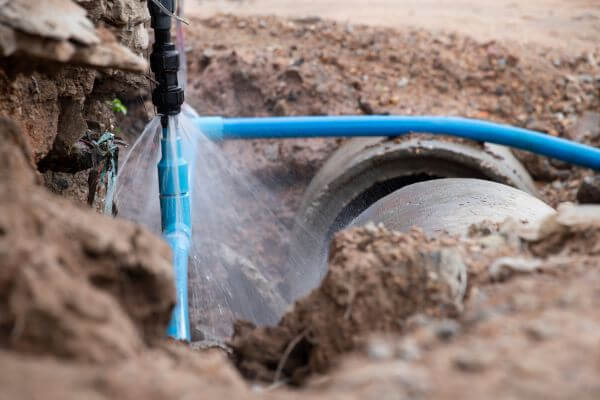Pipe bursts can cause anything from simple water leaks to considerable damage to the structure of a home or business. Knowing the most common causes will help you to prevent costly breakdowns and prolong the useful life of your sewerage network. In this article, we take a closer look at the most common reasons for this problem and offer recommendations for keeping your pipes in perfect condition.
Impairment due to age
Pipes have a limited lifespan and over time, materials suffer natural wear and tear. In older buildings, it is common to find galvanised iron or lead pipes, which are more susceptible to corrosion and cracking.
How to prevent it
-
Conduct regular inspections for signs of rust or early cracking.
-
Assesses the replacement of obsolete pipes with more resistant materials (PVC, cross-linked polyethylene, etc.).
Sudden changes in temperature
Drastic temperature variations can cause expansion and contraction of materials. During very cold winters, it is common for water to freeze inside the pipe, increasing the internal pressure and causing ruptures.
How to prevent it
-
Insulate pipes exposed to the outside with insulating materials.
-
Maintain a minimum temperature in the building during the winter to prevent the water from freezing.
-
Flush or empty pipes that are not used regularly in very cold areas.
Repeated blockages and traffic jams
The accumulation of debris (grease, wipes, food debris, etc.) can lead to blockages that raise the pressure at specific points in the pipe, leading to cracks and, in extreme cases, complete ruptures.
How to prevent it
-
Avoid flushing non-biodegradable items down the toilet or sink.
-
Carry out regular or professional cleaning. You can consult our unblocking and pipe cleaning tips for effective and preventive methods.
-
Consider installing filters or screens in drains to retain solids.
Tree roots and ground movements
In areas with abundant vegetation or near large trees, roots can grow in search of water and penetrate underground pipes. In addition, soil movements due to natural causes (heavy rainfall, landslides, etc.) put pressure on the pipes.
How to prevent it
-
Before building, check the location of pipes and distance from trees.
-
Ask for a professional inspection to detect leaks or cracks that could be exploited by roots.
-
If you already have an old installation and you suspect underground damage, consider a non-constructive pipe repair as a less invasive option.
Lack of maintenance and regular checks
Like any installation, pipes require a minimum of care to function properly. Failure to check the septic tank or drainage system, for example, can lead to chronic clogging and subsequent bursts.
How to prevent it
-
Schedule regular inspections with plumbing specialists or sanitation companies.
-
Check that the septic tank is in good condition and does not present saturation. If required, check our septic tank extraction solutions to keep your system free of build-up.
-
Quickly replace any damaged sections rather than postponing the repair, preventing the problem from getting worse.
Faulty installations or poor quality materials
Sometimes pipes break prematurely because they have not been installed correctly or low quality materials have been chosen to cut costs. Poorly sealed joints or poorly levelled pipes can cause stresses and leaks.
How to prevent it
-
Trust qualified professionals to ensure proper installation and respect local regulations.
-
Be sure to choose certified materials with a long service life, even if this means a higher initial outlay.
Excessive water pressure
Higher than recommended water pressure can lead to accelerated wear inside the pipes. Over time, this leads to cracks or breaks at weak points.
How to prevent it
-
Install pressure regulating valves to keep pressure at safe levels.
-
Periodically check pressure gauges or monitoring devices for sudden variations.
In conclusion, identifying the most frequent causes of burst pipes is the first step to prevent damage and guarantee the correct functioning of your entire sanitation system. Whether due to age, temperature changes, roots or lack of maintenance, there is a solution to every problem if you act in time and in the right way.
-
Protect the investment in your home or business by periodically checking the installation.
-
Avoid inappropriate discharges and maintain control over water pressure.
-
For any symptoms of leakage or clogging, seek professional advice to tackle the root of the problem.
Have you noticed problems with dampness, leaks or blockages in your pipes?
Contact us at Limpiezas Domingo. Our team of specialists will assess the state of your sanitation system and will propose the best solution to avoid major damage and unnecessary costs.


Recent Comments